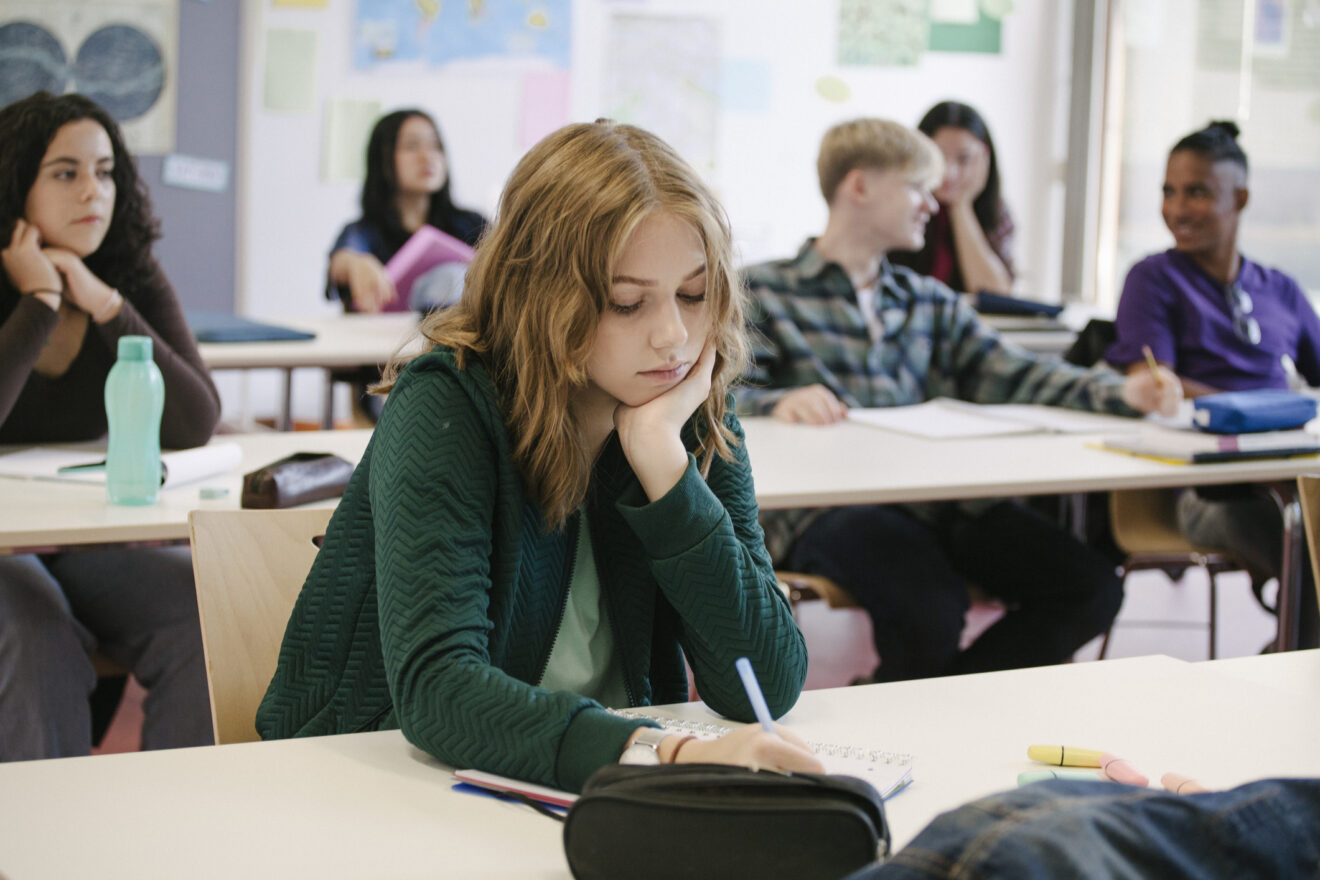Teachers have been challenged since the early days of the pandemic with the slow-down of students’ social-emotional growth and problems with distractions and behavior, as well as watching for the mental health red flags of the growing number of students with severe depression. Many teachers are finding ways to moderate, reduce or address student stress and behavior issues in the classroom.
National Teacher of the Year finalist Rebecka Peterson, who teaches high-school math in Tulsa, Okla., says the traumas students have endured during the pandemic mean “strategies need to shift a bit.” She and first-grade teacher Harlee Harvey of Point Hope, Alaska, another National Teacher of the Year finalist, say building relationships with students is key, as is setting classroom expectations.
Other teachers around the country also have creative ways of connecting with students and easing struggles.
Address student stress and behavior by rebuilding trust

Collaborative professional development workshops — “a far cry from your typical sit-and-get PD,” Principal Magdalena Moore says — help teachers at Jeanne R. Meadows Elementary School in San Jose, Calif., learn and experiment with embedding social-emotional learning into academics. Moore says using the evidence-based PowerMyLearning program rebuilds trust among staff, teachers and students that the pandemic has eroded.
The staff and, in turn, students have learned trauma-based practices, how to support their own needs and ways to turn behavior problems into learning opportunities, all while teachers support their own social-emotional needs.
“We soon experienced encouraging wins,” Moore notes. “One of my teachers implemented student-led conferences, where students took charge during parent-teacher conferences to share their academic progress with their families. Another teacher learned powerful insights through dialogue journals, which captured an ongoing, meaningful conversation between her and students in writing.”
As students build trust with their teachers, they also gain confidence in themselves as learners. One teacher told Moore that she saw “students’ mindsets shift from just thinking about themselves to thinking about their peers and their community.”
“Making SEL a priority built our capacity as a community to help our students thrive. At the end of the school year, we saw a statistically significant difference in the proportion of students who exceeded or met district math and reading benchmarks,” Moore adds.
Connecting kids with calm rooms
Students in some schools who need to step away from classroom stress can turn to calm rooms. These quiet, therapeutic environments have soothing, low-stimulation decor, furnishings and carpet to help reduce stress while students work on self-calming efforts by learning to regulate their emotions and bodies. Research shows they can lessen stress for students and staff, reduce negative behaviors and create stronger relationships.
“We see a lot of students who struggle with anxiety, depression, some suicidal ideation and other issues. We want to make sure that we care for them academically, artistically, physically, mentally and socially,” says teacher and Assistant Principal Vaega Toilolo of Bingham High School in South Jordan, Utah, which just won one of 20 matching grants of up to $5,000 from the Cook Center for Human Connection to help schools furnish and complete a calm room.
Promoting values with digital coins

Music teacher Clyde Forland, who also serves as the head of the culture committee at Oran M. Roberts Elementary School in Dallas, is helping students exemplify the school’s values — and focusing on values helps address student stress and behavior. Students are divided into learning groups in a house system, and teachers can award digital coins from CritterCoin when a student demonstrates core values.
“The houses compete against each other to see who can earn the most coins. We have House displays with real-time scores throughout the school to keep scholars and teachers engaged,” Forland says.
“We also award coins for other behavior we want to encourage, like dressing in house colors on Fridays, being a little ‘extra’ on spirit days or winning physical education games like Flip the Cone in P.E.
“I like to look for scholars who are paying attention in class or demonstrating core values, but I give out coins for other behaviors as well. The other day we were playing a song called ‘Follow the Leader’ in the gym. It’s an example of soca music, so I asked the class, ‘What is soca?’ I didn’t get a response until I said, ‘OK, for a house point, who can answer me correctly?’ Hands shot up around the room.”
Tapping the desire for student autonomy

Boredom isn’t much of an issue for students at Elevate Academy in Idaho. They can build their own schedule to decide which objectives to tackle each day through both direct instruction and self-guided work. The LiFT Learning platform helps monitor each student’s subject mastery.
“Students who have mastered the content to move to the next level, while students who need more time to master the skill seek the support they need,” Elevate academic and curricular liaison Tegan Bylerly says.
“The autonomy I’ve observed students take over their learning is transformative. The ability to manage one’s own learning is a skill they can take with them into the workforce. With a competency-based model, we are able to figure out where students are, meet them where they are and develop their growth to provide a direction and purpose for their future,” Bylerly says.
Diane Benson Harrington is an education writer at SmartBrief. Reach out to her via email, Twitter or LinkedIn.
Opinions expressed by SmartBrief contributors are their own.
_________________________
Subscribe to SmartBrief’s FREE email ASCD newsletter to see the latest hot topics in education. It’s among SmartBrief’s more than 250 industry-focused newsletters.
